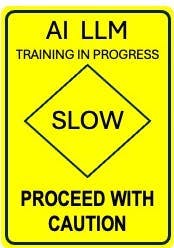AI Networking: Training the Unruly Child
Personal Experience
Thirty years ago, I founded an AI-based software company. AI was described as “knowledge-based systems” back in those days. From a basis of sales knowledge and experiential data, I programmed the software to make recommendations to improve sales. It measured and forecast performance, adapting as the sales of individuals and the company progressed.
Critically, how I made it intelligent was my applying sales experience, judgement and adaptation to results achieved that was programmed into the software. The complexity of today’s evolving networks and massive increase in compute power plus cybersecurity threats make it a whole different world. Artificial Intelligence has been around for a while—using data and adapting to change are not new.
The application of AI to networking and security is what had me write this article since today’s complexity and opportunities for network as a service, network management, data curation and cybersecurity make the exploration a necessity. It seems like an exploration at this point because although there are attractions—cost savings and responsiveness to changing conditions—there are significant unresolved issues that the article raises yet still it looks optimistically at the potential possibilities.
Challenges
The main challenge for GenAI is the distracting and misleading use of the word “Intelligence.” Yes, it already has outstanding characteristics, bringing plain language explanations of learned concepts, coding and surprising graphics capabilities. It’s much more than the knowledge-based systems I referred to above. However, it does not meet our definition of intelligence by any of the obvious criteria.
Also, it currently does not accurately adapt to new information. Here’s an actual example. My wife asked Copilot how to do something on her Galaxy phone. Copilot claimed it knew about the latest software loaded on her phone—but the instructions it gave were incorrect. When asked why, its many apologies included “I have certain limitations and potential weaknesses in how I adapt to new information.”
Imagine if applying GenAI to a critical part of your network infrastructure, data curation, service performance or transaction security and the results were incorrect. You would be putting your organization at great risk. You may have already experienced something similar.
Can GenAI apply judgement or innovative thought in the context of our business goals? How can it deal with the unacknowledged emotional aspects of every decision we make? We shall see! Suddenly, it doesn’t sound so intelligent.
This article is not intended to be a Luddite rant, since I do think that this is an exciting journey for all of us. However, before we get to the positive aspects, there’s still the issue of cybersecurity threats penetrating the large language models (LLMs). I.e., how do you know if the data you are basing your decisions on is inaccurate or deliberately misleading? For instance, if a threat actor deliberately distorts data about an asset’s authentication or privilege, then your network and organization is now toast.
Always Look on the Bright Side of Life
Since we just started the AI Networking journey, let’s assume that these challenges will get sorted out quickly, making AI smarter and safer. Protection against the abuse of LLMs is already under way. So, what are the most promising candidates to simplify and handle network complexity and are they cost-justified? How can we apply some actual, albeit flawed human intelligence and expertise to train this unruly GenAI child?
AI for Network as a Service (NaaS)
Since my article in the May/June issue, NaaS has made rapid progress. At the core is the need for services to be on-demand, available from multiple providers without lock-in, in multiple locations, accessing workloads in multiple clouds with varying performance requirements.
The advantage to any service providers or systems integrators who could offer such a service is huge, since it meets all the enterprise requirements. An Adaptive GenAI system—one that constantly retrains as data changes—may be the only viable, scalable approach. Such a system could gather and update the information accessed either via APIs or a portal.
Managed service providers would be served well too, getting access to the services offered on behalf of their users. The race is on to develop this approach as it addresses the most challenging aspect of NaaS.
The use of AI Networking to the Orchestration/Automation of NOC/SOC (Network and Security Operations is one of the projects of the Open Networking User Group Collaborative (ONUG.net), where I participate. An interesting part or this work1 covers the choices of how to train LLMs or SLMs (industry/context specific Small Language Models) using publicly available services, GenAI augmented tools or custom solutions developed in-house.
The enterprises’ big challenge is to organize large amounts of disparate legacy data in order to train the models.
Other Promising Areas
- Policy as code: Using GenAI to bring Zero Trust principals to automate access, identity, authentication, privilege control, policy enforcement and continual monitoring.
- In ONUG’s Cloud Secure Notification Framework project, GenAI could oversee and report on large quantities of different network data/monitoring/networking incident reports involving cloud-based workloads.
There are many more. Some suggest immediate actions and others are currently under investigation. Speaking of which, the publication of this article is timed to alert readers to ONUG’s Fall event where industry luminaries give the very latest on their work and their perspectives on the state-of-the-art of AI Networking. If it’s anything like the ONUG Spring event, you do not want to miss it. Check it out at ONUG.net.
Conclusion
Despite all the challenges, I am confident that our ingenuity will overcome the cautions at the beginning of this article. Some say the AI bubble will burst. If it does, then it will mean we didn’t make the most of the opportunities to create a better world of networking and far beyond. This story, including updates and insights from the ONUG event, is expanded at cybyr.com/ai.
REFERENCE
About the Author
Mark Fishburn
Provider of Strategic Network, Cybersecurity and Marketing Services
Mark Fishburn | Provider of Strategic Network, Cybersecurity and Marketing Services.
Mark is CEO of cybyr.com and has five decades of experience in software, networking, and security. He is a member of ONUG, MEF and CSA network and security working Groups, CISA contributor and publisher of the Holistic Cybersecurity book: Hey Who Left The Back Door Open? For more information, or to give feedback, email [email protected] or follow him on LinkedIn.


